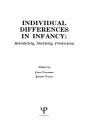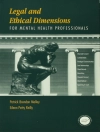Once signed languages are recognized as natural human languages, a world of exploration opens up. Signed languages provide a powerful tool for investigating the nature of human language and language processing, the relation between cognition and language, and the neural organization of language. The value of sign languages lies in their modality. Specifically, for perception, signed languages depend upon high-level vision and motion processing systems, and for production, they require the integration of motor systems involving the hands and face. These facts raise many questions: What impact does this different biological base have for grammatical systems? For online language processing? For the acquisition of language? How does it affect nonlinguistic cognitive structures and processing? Are the same neural systems involved? These are some of the questions that this book aims at addressing. The answers provide insight into what constrains grammatical form, language processing, linguistic working memory, and hemispheric specialization for language. The study of signed languages allows researchers to address questions about the nature of linguistic and cognitive systems that otherwise could not be easily addressed.
Karen Emmorey
Language, Cognition, and the Brain [PDF ebook]
Insights From Sign Language Research
Language, Cognition, and the Brain [PDF ebook]
Insights From Sign Language Research
Koop dit e-boek en ontvang er nog 1 GRATIS!
Taal Engels ● Formaat PDF ● Pagina’s 408 ● ISBN 9781410603982 ● Uitgeverij Taylor and Francis ● Gepubliceerd 2001 ● Downloadbare 6 keer ● Valuta EUR ● ID 2376680 ● Kopieerbeveiliging Adobe DRM
Vereist een DRM-compatibele e-boeklezer












